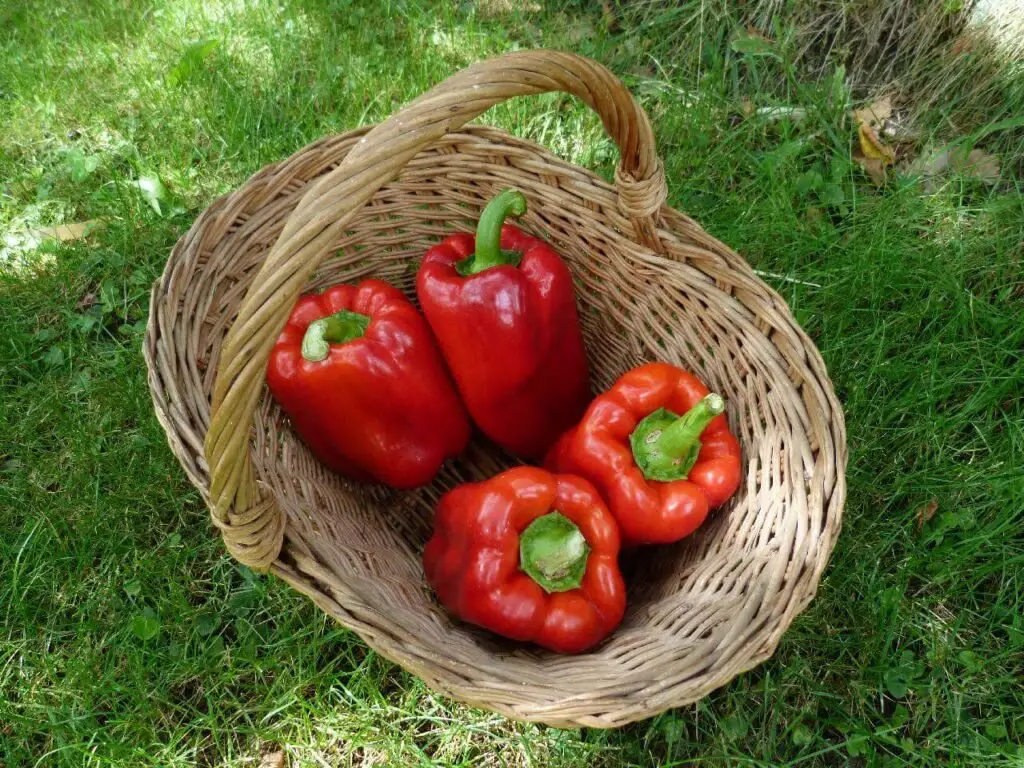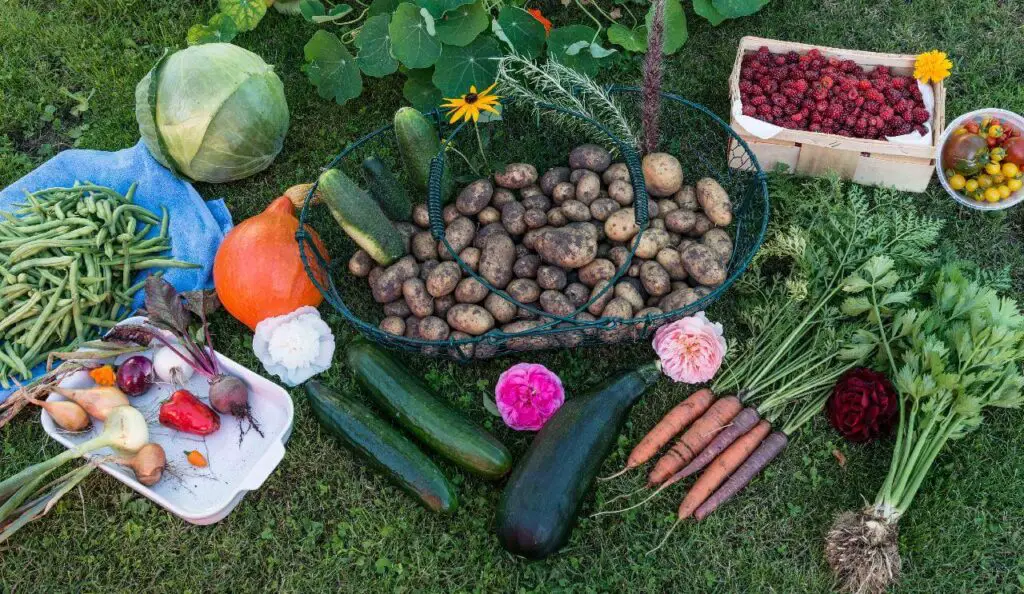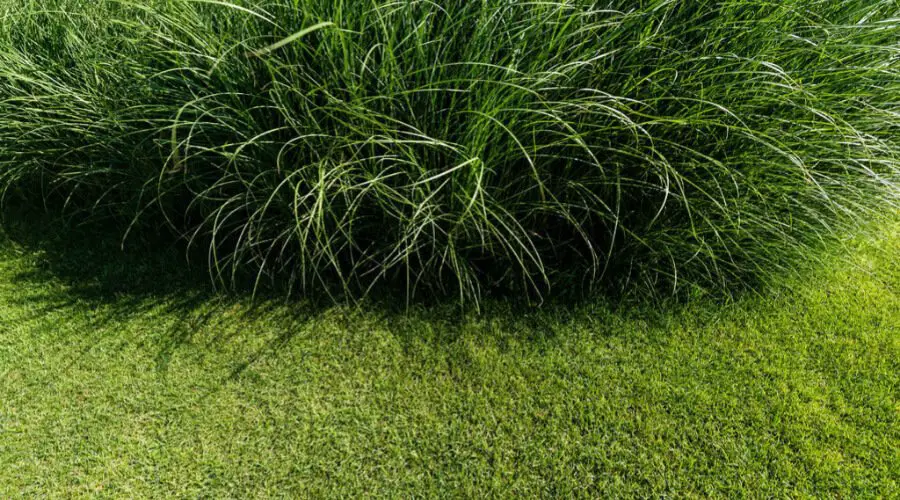Last Updated on July 23, 2023 By Emma W. Thomas
To remove nutgrass from the vegetable garden:
- Gently uproot nutgrass, ensuring to remove the entire root system
- Apply thick organic mulch to suppress nutgrass growth
- Pour hot water on nutgrass to kill it effectively
- Use herbicides specifically for nutgrass, following instructions
- Keep the garden weed-free to prevent nutgrass reinfestation
How Can You Kill Nutsedge In Your Vegetable Garden?

Unless you grow nutsedge in your garden as a food crop, you need to eradicate it since it is pretty annoying. Several methods are effective to kill this weed, including;
Uprooting The Weed
One of the best ways of controlling nutgrass is by pulling it up every two weeks. Since this weed reproduces through underground tubers, you need to remove them before the tubers multiply and become difficult to control. Removing the tubers consistently starves them and helps to eradicate them from your garden.
Before pulling the weed, make sure that you water the affected area adequately to loosen up the soil. Doing this will make it easy to pull out the entire plant without leaving behind any parts, including the tubers. Follow these simple steps;
- Take a garden trowel and slide it into the surface of the soil. Be sure to do this alongside the nutgrass plant.
- Since the root system could be as deep as 18 inches below the soil surface, you will need to go deeper. Get hold of the weed’s bottom and pry it together with the roots out of the soil. Make sure that you pull gently to avoid leaving tubers behind.
- Throw all the weeds and roots inside a garbage bag and dispose of them to prevent the weed from spreading
Minimize Watering Your Vegetable Garden
Nutsedge thrives well in wet, soggy conditions. If you avoid overwatering your vegetable garden, you will control the weed’s spread. Be sure to irrigate your veggies only when they require water.
Mulching Your Garden With Landscaping Fabric
Mulching your vegetable garden with a suitable landscaping fabric such as polypropylene polymer is also effective in getting rid of nutgrass. This fabric is stronger than other mulching materials, preventing new nutgrass from growing. The material also suppresses the growth of this weed between your manual weeding sessions.
When you want to do your biweekly wedding, all you need to do is peel the fabric back and check if there are any weeds to uproot.
Application Of Liquid Horticultural Molasses
If you spot any nutgrass outside the mulched area, you can eliminate them by using liquid horticultural molasses. All you need to do is add 1/4 or 1/2 a cup of molasses to a gallon of water and stir to mix well, then use a spray bottle to drench the weeds with this mixture. Repeat the procedure about two to three times for the weeds to die completely. Be sure to allow the liquid to dry after every application before spraying again.
Using Organic Mulch
You may also use organic mulch instead of landscaping fabric. The best type of organic mulch to use is a 4-inch pine bark since it is more effective in suppressing nutsedge than other types, including straw and cypress bark mulch.
Since nutgrass doesn’t like growing in dry conditions, ensure that you break up your vegetable garden after harvesting and before planting new crops. Use a shovel to remove the entire piece and leave it for about one week. Doing this helps all weeds, including any nutsedge tubers, to dry out completely.
Use Of Suitable Herbicides
Several herbicides are not safe to use on vegetable crops, while others, such as bentazon-based garden sprays, are approved for specific vegetables. According to some research, the best commercial nutgrass killer is a pelargonic acid-based herbicide since it is ideal for many vegetable species.
When using this herbicide, make sure that you follow the manufacturer’s instructions. Do not apply the substance directly to your vegetable crops since it will kill all the plants.
Solar Sterilization
Solar sterilization is also an effective way of controlling nutgrass in your vegetable garden. This method is efficient when carried out in the hottest months of summer, such as July and August. You need to clear the area infested with weeds first by pulling them out with your hands.
This method involves placing a dark plastic material over the affected area. The fabric will then attract the sun’s rays and help to heat and sterilize the beneath soil and kill any nutgrass.
Spraying With Industrial-grade Vinegar
Vinegar contains acetic acid, which is an efficient weed and grass killer, depending on its concentration. Industrial-grade vinegar has around 20% and 30% acetic acid, and spraying it on nutgrass can help eradicate it. To use this product;
- Fill a spray bottle with vinegar
- Adjust the nozzle set to stream
- Spray the substance directly onto the weed, and be careful not to spray your veggies
- Repeat the process every day until the weed dies
What Is Nutgrass?
Nutgrass, also known as nutsedge, is a persistent and invasive weed commonly found in lawns, gardens, and agricultural fields. It belongs to the sedge family and is characterized by its triangular stems, long narrow leaves, and distinctive seedheads. Nutgrass can quickly spread through underground tubers, making it challenging to control.
What Does Nutgrass Look Like?
Nutgrass, scientifically known as Cyperus rotundus, is a perennial sedge which is considered one of the most difficult weeds to control. Also known as nutsedge or coco grass, it’s crucial to identify it for proper eradication. Here’s what to look out for:
- Grass-like Appearance: Despite its name, nutgrass isn’t a grass – it’s a sedge. But it closely resembles the normal grass, leading to confusion. The easiest distinguishment is to note the leaf arrangement and base stem of the plant which are different from the typical grass.
- Triangular Stems: Nutgrass plants have rigid, erect stems that are triangular in shape. You can determine this by rolling the stem between your fingers.
- Vibrant Green Color: Nutgrass comes primarily in a lighter, more vibrant green color compared to its counterparts. This makes it stand out amongst other yard plants.
- Leaf Structure: The leaves of nutgrass are smooth, linear, and taper to a sharp point. They are arranged in groups of three from the base.
- Flowers: Nutgrass produces small, brown to yellowish flowers on spikes at the tip of the stem. These spikes form an umbrella-like cluster.
- Tubers: Nutgrass has a well-developed underground system consisting of tubers and rhizomes. The tubers are small, round, and brown with a nutty interior. These tubers are the ‘nut’ part of nutgrass.
The table below summarizes the key features of nutgrass:
| Feature | Description |
|---|---|
| Structure | Grass-like |
| Stem | Triangular and rigid |
| Color | Vibrant green |
| Leaf | Smooth, linear & tapering |
| Flower | Brown to yellow spikes |
| Tubers & Rhizomes | Well-developed |
What Causes a Nutsedge Invasion?
Nutsedge, also known as nutgrass, is a pervasive, difficult-to-control weed that often invades lawns and gardens. There is an array of different factors contributing to a nutsedge invasion. Understanding these conditions will help in formulating extensive measures to control and eliminate this stubborn weed.
1) Excessive Moisture
- Nutsedge thrives in waterlogged or overly wet conditions.
- Overwatering lawns or garden beds are favorable conditions for nutsedge to develop.
- It can also indicate a drainage problem in your lawn or garden, causing the soil to retain too much water.
2) Poorly Drained Lawns
- Nutsedge tends to emerge in poorly drained or swampy areas of lawns or gardens.
- An imbalance in lawn grading that leads to water pooling in certain areas can create a breeding ground for nutsedge.
3) Inappropriate Mowing Height
- Mowing lawns too short can also lead to a nutsedge invasion.
- This gives the weed an ideal breeding ground by exposing the soil directly to sunlight.
- It’s best to keep your lawn slightly taller to shade the soil and keep it cool.
4) Warm Weather Climates
- Nutsedge typically prefers warm, tropical climates.
- In regions with high-temperature conditions, the prevalence of nutsedge significantly increases.
5) Infertile Soil
- Nutsedge tends to flourish in infertile or barren soil conditions.
- This is often found in areas where traditional lawn grass or other plants struggle to survive.
How Can You Control And Prevent Nutsedge From Attacking Your Vegetable Garden?

Nutgrass is an aggressive and persistent weed that is difficult to eliminate. It, therefore, needs to be controlled before it spreads in your garden. Effective control technique involves combining mechanical, chemical, and cultural methods.
Cultural Methods
Nutgrass does well in wet areas with frequent irrigation, poor drainage, or in places where the sprinklers are leaking. But, once the weed is established, it can thrive in any moisture level and even in drought conditions. Its tubers can be introduced in the nursery stock or topsoil by cultivation since they can stay in the soil for several years.
When purchasing topsoil, plants, or sod, it is necessary to look out to avoid bringing it to your garden. Make sure that you also clean your equipment and tools like tillers after using them in infested areas. Doing this will help to prevent the spreading of rhizomes and tubers to other parts of the garden.
It is also essential to follow all recommended practices, such as maintaining the recommendable soil pH, using the right fertilizer, and applying it at the proper time and rate. Ensure that you also water your vegetables at the right time and rate to avoid excess moisture on the soil, which encourages nutsedges to thrive more. You can water your garden and lawns infrequently but profoundly and allow the surface soil to dry before watering again.
You will also need to monitor and control disease and insect infestations, to avoid creating bare spots for nutsedge to grow. Nutgrass does not thrive in the shade. You can rotate your vegetable garden into densely planted tall crops like southern peas or beans for a season to minimize the amount of nutsedge over several seasons.
Mechanical Control Techniques
Mechanical control involves digging up small patches of nutgrass to eradicate it. To do this, you have to;
- Dig about ten inches deep into the soil
- Dig between eight and ten inches more than the diameter of the leafy portion of the plant above the ground. Doing this helps to remove any tubers and prevent them from spreading.
- Be sure to dig in the early spring when no more tubers are being produced
Use Of Chemicals
You can also control the growth of nutsedges by using chemicals such as postemergence herbicides. Different herbicides are effective on specific species, and it is necessary to identify the nutsedge you want to control. Herbicides will also vary depending on which plants you can use them around without destroying the crops.
It is essential to always read the label before using the herbicide to ensure that you are using the right one for your plants. To apply the herbicide, make sure that the weed is thriving in moist soil and warm conditions to take up the chemical better. You can irrigate your garden before spraying it with the herbicide.
What Are The Different Species Of Nutgrass, And How Can You Identify Them?

There are two common types of nutgrass, namely;
- Cyperus rotundus (purple nutsedge)
- Cyperus esculentus (yellow nutsedge)
These two species usually grow together, but the yellow one is more widespread since it has a better tolerance to cold. The table below shows the distinctive features that help differentiate the species.
| Purple Nutsedge | Yellow Nutsedge |
Its leaves taper abruptly and have a blunt point. | It has a long leaf tip that is tapered. |
The tubers are linked in chains on rhizomes. | Single tubers are at the tips of rhizomes. |
Seed heads are purple. | Seed heads are yellow. |
Purple nutsedge has dark green leaves. | It has light green leaves. |
Mature purple nutgrass is below 6-inches tall. | Mature purple nutgrass is below 6 inches tall. |
Final Thought
Nutsedge can be quite a nuisance when it invades a vegetable garden since it is difficult to eliminate. It also spreads very fast and can compete with your crops for essential nutrients. One of the most effective ways to get rid of this weed is by pulling it out and depriving it of a conducive environment like wet grounds.
Using other methods mentioned above requires proper identification of the species. Be sure to follow the appropriate process of controlling as well as eradicating the weed.
References:
https://www.angi.com/articles/how-to-get-rid-nut-grass.htm
https://www.weekand.com/home-garden/article/kill-nutsedges-vegetable-garden-18017761.php
Emma is a graduate of Domestic Science or Family and Consumer Sciences (Home Economics) from the University of Wisconsin. She has 7 years of experience Working with the strategic section of BestBuy and now writing full-time for Homeeon.
From Managing the Home, Interiors, Cleaning, and Exteriors to Gardening and everything about Making A Home Liveable – is her passion and this Homeeon is the result of this.
Emma loves decorating her home with the best stuff found online. She cares about quality over anything and writes reviews about them here in Homeeon. Get in touch with her over Pinterest.
Keep reading her blogs.

